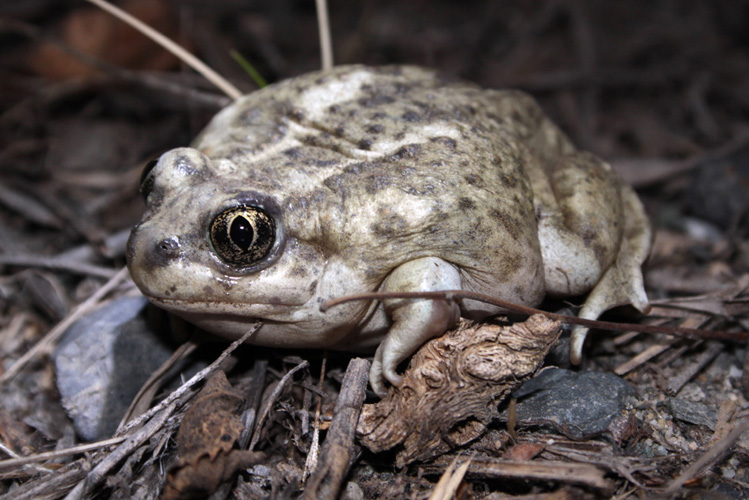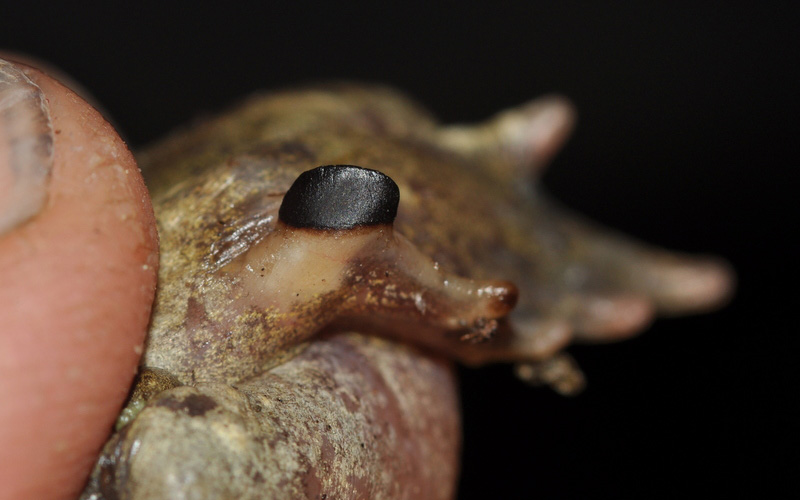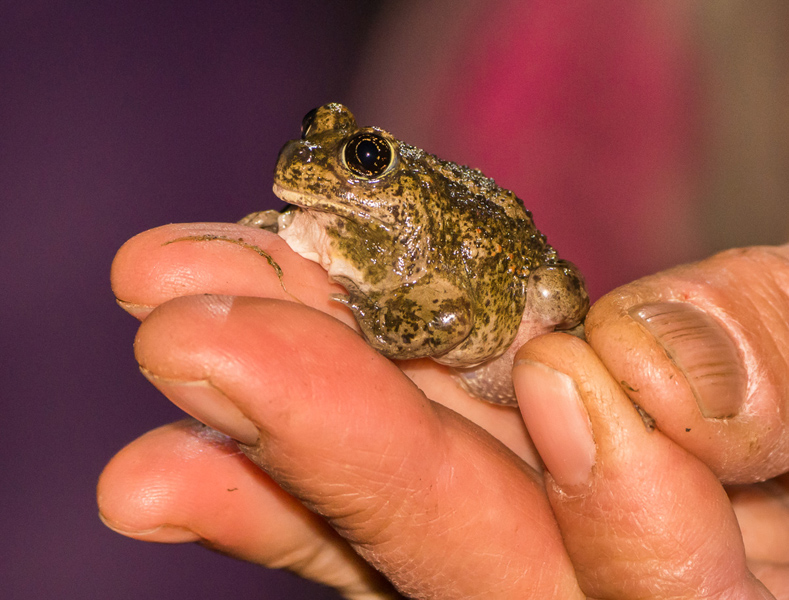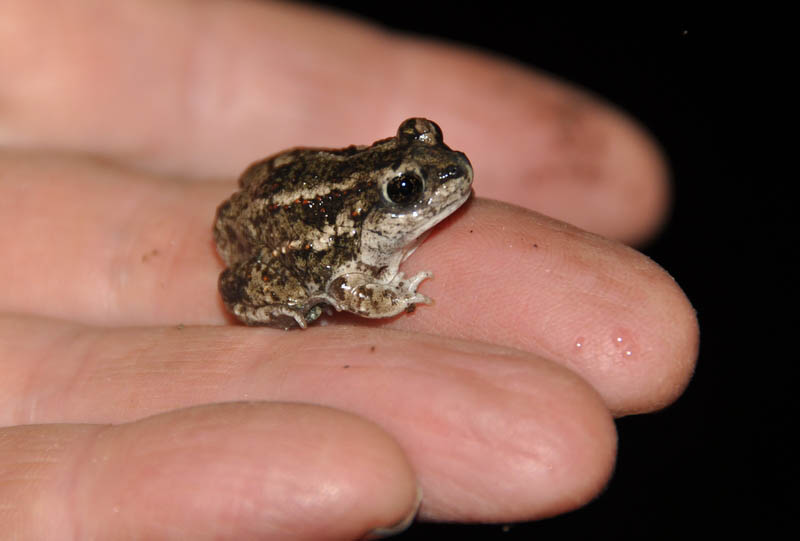Beginning in 2022 the Nicola Naturalist Society is undertaking surveys for the Great Basin Spadefoot (Spea intermontana) in the Nicola Valley around Merritt, BC. This amphibian species is listed as Threatened in Canada. The Douglas Lake Plateau near Merritt supports one of the few breeding concentrations in British Columbia. The project is an extension of the five-year amphibian monitoring project our club completed under the guidance of professional herpetologists in 2011-2015. Information on that project is here: Amphibian Monitoring 2011-2015

A Great Basin Spadefoot near Douglas Lake, BC. This charismatic and threatened species is highly adapted to the dry interior grasslands and spends most of its life buried underground. They emerge in the spring to feed and move to small ponds where they breed. Photo: © Alan Burger
The current project is funded by a grant from an anonymous donor to BC Nature (our club’s parent organization) and with our club’s own funds. The goals of the project are to repeat the call surveys that were done in 2011-2015 to track changes, and to survey new areas to increase our knowledge of the distribution and relative abundance of this species. The call surveys involve club volunteers doing road transects at night (all on public roads) when the spadefoots are calling, stopping at 800 m intervals to do a 5-minute listening survey. Spadefoot males give distinctive loud calls which humans with reasonable hearing can detect almost a kilometer away in optimal conditions.
The 2022 season was an opportunity to refine the survey methods and train volunteer observers. Despite a late start to the season, we completed five nights of surveys covering 60 listening stations. Spadefoots were recorded at 16 stations, which included 13 stations where Spadefoots were previously recorded in 2011-2015, and three new locations. Details of the 2022 surveys are in our progress report: NNS Spadefoot surveys Report 2022
In 2023 we completed night call surveys at 94 stations on seven road transects. We detected Spadefoots at 19 stations (20%). We also did daytime surveys for evidence of breeding at five ponds but our survey date (22 July) was evidently too late in the season and no Spadefoots were found, although we did find numerous Western Toads (both adults and newly-metamorphosed toadlets) at four ponds. Details of the 2023 surveys are in our progress report: NNS Spadefoot surveys Report 2023
Enjoy some more photos of these small amphibians.

This is why spadefoots are called spadefoots – this hard black tubercle on the underside of each hind foot is used for digging. Spadefoots dig backwards into soft soil to avoid dry or cold conditions. Photo: © Kristiina Ovaska





